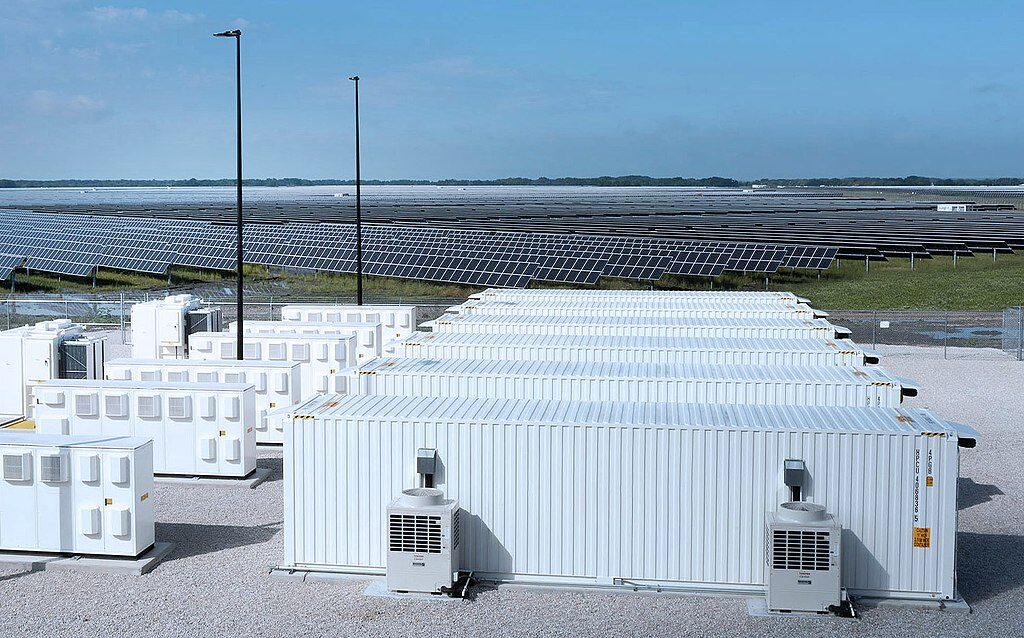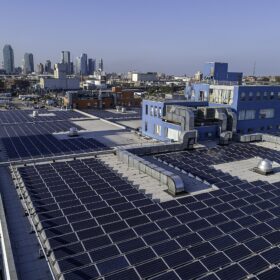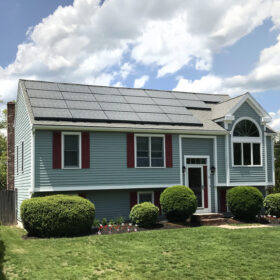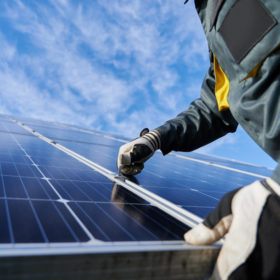Global solar capacity additions are expected to average 540 GW through to 2035, according to the latest report by the IEA.
The IEA World Energy Outlook 2025 report predicts that renewables will grow faster than any other major energy source across all growth scenarios, with the continued trajectory led by the deployment of solar.
But it adds that under its Current Policies Scenario (CPS), which accounts for policies and regulations already in place, solar’s global annual additions will stall at around levels first seen in 2024, largely due to mounting integration challenges.
Renewables, led by solar, are still projected to go from one third of global power generation in 2024 to just under half by 2035 under the CPS scenario, while coal remains the largest single source of global power generation over the next ten years.
China is expected to hold its position as the largest market for renewables, accounting for 45% to 60% of global deployment over the next ten years across all of IEA’s growth scenarios, while also remaining the largest manufacturer of most renewable energy technologies.
IEA’s report suggests repowering programs for solar would enable energy outputs to increase further. The agency says an accelerated repowering schedule could lead to a substantial increase in the size of the solar PV panel market, by benefiting from the current oversupply of solar products and allowing installations to benefit from panels that are 40% more efficient that those that entered the market in 2010.
“An accelerated repowering schedule would raise the average performance of the solar PV fleet, due to faster stock turnover and uptake of higher efficiency panels,” the report explains. “For example, a 2% absolute increase in the average efficiency of a panel would result in over 10% higher electricity output from each panel with the same rated capacity. By 2035, that would mean up to 15% higher electricity output from solar PV globally.”
Elsewhere in the report, IEA says energy market dynamics are increasingly shaped by a group of emerging countries, led by India and Southeast Asia and joined by countries in the Middle East, Latin America and Africa. The watchdog describes these countries as “taking up the baton from China” but points out that none will come close to replicating China’s energy trajectory alone.
By 2035, 80% of energy consumption growth occurs in regions with high-quality solar irradiation, representing a sharp contrast with the past decade when medium- to low-solar regions drove half of energy consumption growth.
“These conditions provide an opportunity to harness abundant solar resources that should translate into higher average capacity factors for solar PV than currently registered, and potentially lower average generation costs,” the report says.
Elsewhere, a chapter focused on electricity access highlights that countries with large remaining access gaps are facing high financing costs, heavy debt burdens and shrinking development budgets. Progress on electrification is currently slower than it was pre-pandemic, IEA adds, meaning current trajectories fall short of the pace required to deliver universal access over the next decade and even by mid-century.
In October, IEA lowered its forecast for solar growth over the second half of this decade, which it attributed to policy changes in China and the United States.
This content is protected by copyright and may not be reused. If you want to cooperate with us and would like to reuse some of our content, please contact: editors@pv-magazine.com.








By submitting this form you agree to pv magazine using your data for the purposes of publishing your comment.
Your personal data will only be disclosed or otherwise transmitted to third parties for the purposes of spam filtering or if this is necessary for technical maintenance of the website. Any other transfer to third parties will not take place unless this is justified on the basis of applicable data protection regulations or if pv magazine is legally obliged to do so.
You may revoke this consent at any time with effect for the future, in which case your personal data will be deleted immediately. Otherwise, your data will be deleted if pv magazine has processed your request or the purpose of data storage is fulfilled.
Further information on data privacy can be found in our Data Protection Policy.